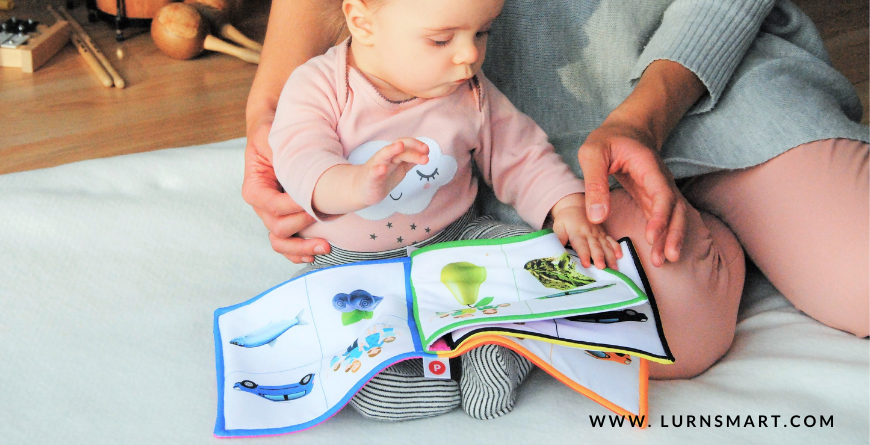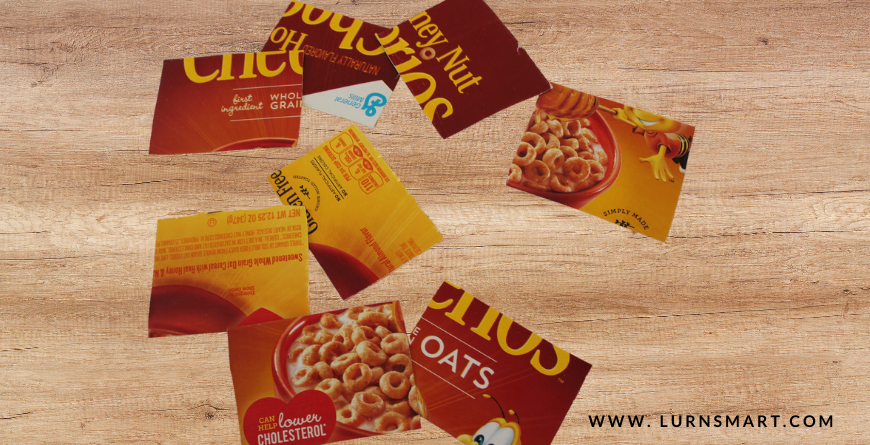3 Powerful Tips to Promote Print Awareness + Print Awareness Checklist
- Categories Early Learning, Reading
- Tags Reading time 5 min

Print awareness is a very important pre-reading skill that your child needs to develop to become a successful reader!
As fancy as this term might sound, print awareness is nothing but your child’s earliest understanding of the written language.
In other words, it is:
- Knowing how to hold a book right.
- Learning that a book is read from left to right and front to back.
- Understanding that letters can form words and words have meaning and words can be put together to convey a thought.
These print awareness concepts might seem simple but children are not born knowing them, so it is something that they have to eventually learn.
The good news is, most children develop print awareness easily and effortlessly when they are surrounded by print.
In this blog post, I’m going to share with you 3 Powerful Tips to Promote Print Awareness in Children
Note: At the end of this post, you have a Print Awareness Checklist that includes 20 questions that you can ask while reading to help your child learn various print awareness concepts.
3 Powerful Tips to Promote Print Awareness
1. READ OFTEN AND TOGETHER:
Reading often to your child is one of the easiest ways to increase print awareness. However, instead of reading a book straight through, here are two things that you can do to develop print awareness.
a. Invite your child to participate
b. Use your finger to trace the text
a. Invite your child to participate:

If your child is 3 and under, invite your child to do the following while you read:
- Hold the book.
- Turn the pages.
- Point to pictures and words.
If your child is 3 and up, here are some things that you can talk about:
- Title, author, illustrator of the book.
- Uppercase/lowercase letters.
- Difference between letters, words, sentences, and paragraphs.
- Punctuations and the reason they are used for.
Trust me, these simple activities and conversations would help your child learn important print awareness concepts in a more authentic and organic way!
b. Use your finger to trace the text:

The next important thing to remember while reading is to use your finger to trace the text. This will give your child lots of opportunities to see the word that you read.
Research shows that most children spent about 95% of the time looking at the pictures in the book while their parents read to them rather than looking at the words.
This is normal but if your child looks only at pictures while you read, then you cannot expect your child to learn about print.
Therefore, to minimize this situation, talk about pictures before you start reading.
This way, your child will not sit there looking only at pictures instead follow your finger as you trace the text.
By the way, if you are a parent who finds it challenging to get your child to sit down while you read, then check out my post 12 Genius Ways to Create a Love for Reading Books in Kids to learn how you can get your child to enjoy reading.
2. NOTICE PRINT IN THE ENVIRONMENT:
Print is all around us!
So the easiest way to develop your child’s print awareness is to encourage your child to notice print in the environment.
Here’s how you can do it!
The next time you go out, just point to letters and words on signboards, labels, and shopping lists and talk about them.
If your child is 3 and up, you can play the below games to draw your child’s attention to the print in the environment.
a. I Spy:

I Spy is an age-old game that is simple and fun!
When our son was little we used to play I Spy and it helped increase his print awareness and phonemic awareness.
To play this game, just pick a letter or a familiar word in the environment and say “I spy with my little eye….(that letter or that word).”
For example,
If you pick M, your child should look around and notice M in McDonald’s or if your child is familiar with the word McDonald’s, your child should be able to recognize the word and point to it.
You can also challenge your child further by picking a sound instead of a letter.
If you say, “I spy a word that begins with the sound /m/. Your child should look for a word that begins with the sound /m/ – McDonald’s.
b. License Plate Game:

When you are on a long trip with your child, one of the frequent questions that he or she might ask is, “How long before we reach?”
The license plate game is a fun game that you can play to keep boredom at bay!
Trust me, if your child is a car lover, he or she will thoroughly ENJOY this!
So to play this game, simply look for letters on the license plates. The first one to spot it gets a point.
For example,
If you say “Find S”. Your child should look for the letter S on the license plate.
You can also challenge your child further by asking your child to tell you the color of the car that has the letter S on its license plate.
By the way, the license plate game is also a great opportunity for you to help your child learn the various makes and models of cars.
c. Label Puzzles:

Another fun way to increase awareness of print is to turn your food boxes into puzzles!
So the next time you come home after your monthly shopping, remember to save those food boxes.
Depending on your child’s skill level, cut the boxes into the desired number of pieces and let your child piece them together.
What a great way to increase print awareness while building logical and critical thinking!
3. LABEL THINGS AROUND THE HOUSE:

Labeling things around the house is another interesting way to enhance your child’s print awareness!
Little children are curious and are like sponges.
When you make their environment rich with print, those little brains soak it all up!
So grab a paper, pen, and tape and label the things around your house–clock, door, wall, toy room, kitchen, sofa, and so on.
You can also print your labels. It is completely up to you!
Apart from giving you lots of opportunities to talk about the things around the house, labels can help your little one learn that things have names and their names can be represented by print–a very important knowledge to have!
Just try it, and you will thank me for this tip!
PRINT AWARENESS CHECKLIST:
As promised earlier in this post, here are 20 questions that you can ask while reading to teach and assess your child’s print awareness:
- Which way do I go when I read words?
- Can you turn to page (number)?
- (Open a page with text) Where do I start reading?
- (Open a page with text) Where/What is the first word on this page?
- What is the first letter of this word?
- Can you find an uppercase letter on this page?
- Can you find a lowercase letter on this page?
- Show me the last word in this book?
- When I get to the end of this line, where do I read next?
- Can you find the front of the book?
- Can you find the back of the book?
- Where/What is the title of the book?
- Who is the author of the book?
- Who is the illustrator of the book?
- Find a period on this page. What is it for?
- Find a question mark on this page. What is it for?
- Find an exclamation mark on this page. What is it for?
- Find a comma on this page. What is it for?
- Find quotation marks on this page. What is it for?
- Find an italicized word on this page.
I hope you found the tips and games shared in this post useful.
If you did, don’t forget to let us know in the comments below.
Would love to hear from you!
By the way, print awareness is just one of the many pre-reading skills that your little one needs to develop in order to be a successful reader.
If you want to learn more about how to develop the other important pre-reading skills, check out my post 6 Important Pre Reading Skills to Prepare Your Child for Reading Success.
If you are supporting your child to read at home, then you might want to read my blog post Teach Your Child to Read Using Phonics: The Ultimate 7-Step Guide for step-by-step instructions and all the necessary resources that you might need to help your child read and spell easily and efficiently.
You may also like




